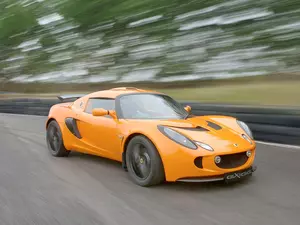
| Vehicle | Curb weight | Difference from world's smallest | Weight to power ratio | 0—60 mph acceleration ratio | Consumption ratio |
|---|---|---|---|---|---|
| 1.6 |
876 kg / 1932 lbs |
451 kg (995 lbs) heavier | 6 kg to 1 hp | 141 kg/s (311 lbs/s) |
139 kg/L (306 lbs/L) |
| CR 1.6 |
848 kg / 1870 lbs |
423 kg (933 lbs) heavier | 6 kg to 1 hp | 137 kg/s (302 lbs/s) |
135 kg/L (298 lbs/L) |
| S 1.8 |
924 kg / 2037 lbs |
499 kg (1100 lbs) heavier | 4 kg to 1 hp | 210 kg/s (463 lbs/s) |
123 kg/L (271 lbs/L) |
| S CR 1.8 |
905 kg / 1996 lbs |
480 kg (1059 lbs) heavier | 4 kg to 1 hp | 206 kg/s (454 lbs/s) |
121 kg/L (267 lbs/L) |
| Cup R 1.8 |
900 kg / 1985 lbs |
475 kg (1048 lbs) heavier | 4 kg to 1 hp | - | - |
| S Cup 1.8 |
952 kg / 2099 lbs |
527 kg (1162 lbs) heavier | 4 kg to 1 hp | 216 kg/s (476 lbs/s) |
127 kg/L (280 lbs/L) |
| Cup 250 1.8 |
931 kg / 2053 lbs |
506 kg (1116 lbs) heavier | 4 kg to 1 hp | 227 kg/s (501 lbs/s) |
124 kg/L (273 lbs/L) |
| Cup 260 1.8 |
902 kg / 1989 lbs |
477 kg (1052 lbs) heavier | 4 kg to 1 hp | 226 kg/s (498 lbs/s) |
120 kg/L (265 lbs/L) |
| Vehicle | 1.6 |
|---|---|
| Curb weight |
876 kg / 1932 lbs |
| Difference from world's smallest | 451 kg (451 lbs) heavier |
| Weight to power ratio | 6 kg to 1 hp |
| 0—60 mph acceleration ratio | 141 kg/s (311 lbs/s) |
| Consumption ratio |
139 kg/L (306 lbs/L) |
| Vehicle | CR 1.6 |
| Curb weight |
848 kg / 1870 lbs |
| Difference from world's smallest | 423 kg (423 lbs) heavier |
| Weight to power ratio | 6 kg to 1 hp |
| 0—60 mph acceleration ratio | 137 kg/s (302 lbs/s) |
| Consumption ratio |
135 kg/L (298 lbs/L) |
| Vehicle | S 1.8 |
| Curb weight |
924 kg / 2037 lbs |
| Difference from world's smallest | 499 kg (499 lbs) heavier |
| Weight to power ratio | 4 kg to 1 hp |
| 0—60 mph acceleration ratio | 210 kg/s (463 lbs/s) |
| Consumption ratio |
123 kg/L (271 lbs/L) |
| Vehicle | S CR 1.8 |
| Curb weight |
905 kg / 1996 lbs |
| Difference from world's smallest | 480 kg (480 lbs) heavier |
| Weight to power ratio | 4 kg to 1 hp |
| 0—60 mph acceleration ratio | 206 kg/s (454 lbs/s) |
| Consumption ratio |
121 kg/L (267 lbs/L) |
| Vehicle | Cup R 1.8 |
| Curb weight |
900 kg / 1985 lbs |
| Difference from world's smallest | 475 kg (475 lbs) heavier |
| Weight to power ratio | 4 kg to 1 hp |
| 0—60 mph acceleration ratio | - |
| Consumption ratio | - |
| Vehicle | S Cup 1.8 |
| Curb weight |
952 kg / 2099 lbs |
| Difference from world's smallest | 527 kg (527 lbs) heavier |
| Weight to power ratio | 4 kg to 1 hp |
| 0—60 mph acceleration ratio | 216 kg/s (476 lbs/s) |
| Consumption ratio |
127 kg/L (280 lbs/L) |
| Vehicle | Cup 250 1.8 |
| Curb weight |
931 kg / 2053 lbs |
| Difference from world's smallest | 506 kg (506 lbs) heavier |
| Weight to power ratio | 4 kg to 1 hp |
| 0—60 mph acceleration ratio | 227 kg/s (501 lbs/s) |
| Consumption ratio |
124 kg/L (273 lbs/L) |
| Vehicle | Cup 260 1.8 |
| Curb weight |
902 kg / 1989 lbs |
| Difference from world's smallest | 477 kg (477 lbs) heavier |
| Weight to power ratio | 4 kg to 1 hp |
| 0—60 mph acceleration ratio | 226 kg/s (498 lbs/s) |
| Consumption ratio |
120 kg/L (265 lbs/L) |

| Vehicle | Curb weight | Difference from world's smallest | Weight to power ratio | 0—60 mph acceleration ratio | Consumption ratio |
|---|---|---|---|---|---|
| Cup 250 1.8 |
917 kg / 2022 lbs |
492 kg (1085 lbs) heavier | 4 kg to 1 hp | 224 kg/s (494 lbs/s) |
122 kg/L (269 lbs/L) |
| Sport 1.6 |
866 kg / 1910 lbs |
441 kg (973 lbs) heavier | 6 kg to 1 hp | 140 kg/s (309 lbs/s) |
137 kg/L (302 lbs/L) |
| Sport 220 1.8 |
904 kg / 1993 lbs |
479 kg (1056 lbs) heavier | 4 kg to 1 hp | 205 kg/s (452 lbs/s) |
121 kg/L (267 lbs/L) |
| Vehicle | Cup 250 1.8 |
|---|---|
| Curb weight |
917 kg / 2022 lbs |
| Difference from world's smallest | 492 kg (492 lbs) heavier |
| Weight to power ratio | 4 kg to 1 hp |
| 0—60 mph acceleration ratio | 224 kg/s (494 lbs/s) |
| Consumption ratio |
122 kg/L (269 lbs/L) |
| Vehicle | Sport 1.6 |
| Curb weight |
866 kg / 1910 lbs |
| Difference from world's smallest | 441 kg (441 lbs) heavier |
| Weight to power ratio | 6 kg to 1 hp |
| 0—60 mph acceleration ratio | 140 kg/s (309 lbs/s) |
| Consumption ratio |
137 kg/L (302 lbs/L) |
| Vehicle | Sport 220 1.8 |
| Curb weight |
904 kg / 1993 lbs |
| Difference from world's smallest | 479 kg (479 lbs) heavier |
| Weight to power ratio | 4 kg to 1 hp |
| 0—60 mph acceleration ratio | 205 kg/s (452 lbs/s) |
| Consumption ratio |
121 kg/L (267 lbs/L) |

| Vehicle | Curb weight | Difference from world's smallest | Weight to power ratio | 0—60 mph acceleration ratio | Consumption ratio |
|---|---|---|---|---|---|
| 1.8 |
896 kg / 1976 lbs |
471 kg (1039 lbs) heavier | 4 kg to 1 hp | 204 kg/s (450 lbs/s) |
119 kg/L (262 lbs/L) |
| Vehicle | 1.8 |
|---|---|
| Curb weight |
896 kg / 1976 lbs |
| Difference from world's smallest | 471 kg (471 lbs) heavier |
| Weight to power ratio | 4 kg to 1 hp |
| 0—60 mph acceleration ratio | 204 kg/s (450 lbs/s) |
| Consumption ratio |
119 kg/L (262 lbs/L) |

| Vehicle | Curb weight | Difference from world's smallest | Weight to power ratio | 0—60 mph acceleration ratio | Consumption ratio |
|---|---|---|---|---|---|
| 1.8 i 16V |
756 kg / 1667 lbs |
331 kg (730 lbs) heavier | 6 kg to 1 hp | 140 kg/s (309 lbs/s) |
102 kg/L (225 lbs/L) |
| 1.8 i 16V 111 |
805 kg / 1775 lbs |
380 kg (838 lbs) heavier | 5 kg to 1 hp | 168 kg/s (370 lbs/s) |
117 kg/L (258 lbs/L) |
| 1.8 i 16V 111R |
850 kg / 1874 lbs |
425 kg (937 lbs) heavier | 4 kg to 1 hp | 181 kg/s (399 lbs/s) | - |
| Vehicle | 1.8 i 16V |
|---|---|
| Curb weight |
756 kg / 1667 lbs |
| Difference from world's smallest | 331 kg (331 lbs) heavier |
| Weight to power ratio | 6 kg to 1 hp |
| 0—60 mph acceleration ratio | 140 kg/s (309 lbs/s) |
| Consumption ratio |
102 kg/L (225 lbs/L) |
| Vehicle | 1.8 i 16V 111 |
| Curb weight |
805 kg / 1775 lbs |
| Difference from world's smallest | 380 kg (380 lbs) heavier |
| Weight to power ratio | 5 kg to 1 hp |
| 0—60 mph acceleration ratio | 168 kg/s (370 lbs/s) |
| Consumption ratio |
117 kg/L (258 lbs/L) |
| Vehicle | 1.8 i 16V 111R |
| Curb weight |
850 kg / 1874 lbs |
| Difference from world's smallest | 425 kg (425 lbs) heavier |
| Weight to power ratio | 4 kg to 1 hp |
| 0—60 mph acceleration ratio | 181 kg/s (399 lbs/s) |
| Consumption ratio | - |

| Vehicle | Curb weight | Difference from world's smallest | Weight to power ratio | 0—60 mph acceleration ratio | Consumption ratio |
|---|---|---|---|---|---|
| 1.8 i 16V |
660 kg / 1455 lbs |
235 kg (518 lbs) heavier | 4 kg to 1 hp | 150 kg/s (331 lbs/s) | - |
| Vehicle | 1.8 i 16V |
|---|---|
| Curb weight |
660 kg / 1455 lbs |
| Difference from world's smallest | 235 kg (235 lbs) heavier |
| Weight to power ratio | 4 kg to 1 hp |
| 0—60 mph acceleration ratio | 150 kg/s (331 lbs/s) |
| Consumption ratio | - |

| Vehicle | Curb weight | Difference from world's smallest | Weight to power ratio | 0—60 mph acceleration ratio | Consumption ratio |
|---|---|---|---|---|---|
| 1.8 i 16V |
690 kg / 1521 lbs |
265 kg (584 lbs) heavier | 6 kg to 1 hp | 123 kg/s (271 lbs/s) | - |
| 1.8 i 16V 111S |
770 kg / 1698 lbs |
345 kg (761 lbs) heavier | 5 kg to 1 hp | 151 kg/s (333 lbs/s) | - |
| Vehicle | 1.8 i 16V |
|---|---|
| Curb weight |
690 kg / 1521 lbs |
| Difference from world's smallest | 265 kg (265 lbs) heavier |
| Weight to power ratio | 6 kg to 1 hp |
| 0—60 mph acceleration ratio | 123 kg/s (271 lbs/s) |
| Consumption ratio | - |
| Vehicle | 1.8 i 16V 111S |
| Curb weight |
770 kg / 1698 lbs |
| Difference from world's smallest | 345 kg (345 lbs) heavier |
| Weight to power ratio | 5 kg to 1 hp |
| 0—60 mph acceleration ratio | 151 kg/s (333 lbs/s) |
| Consumption ratio | - |